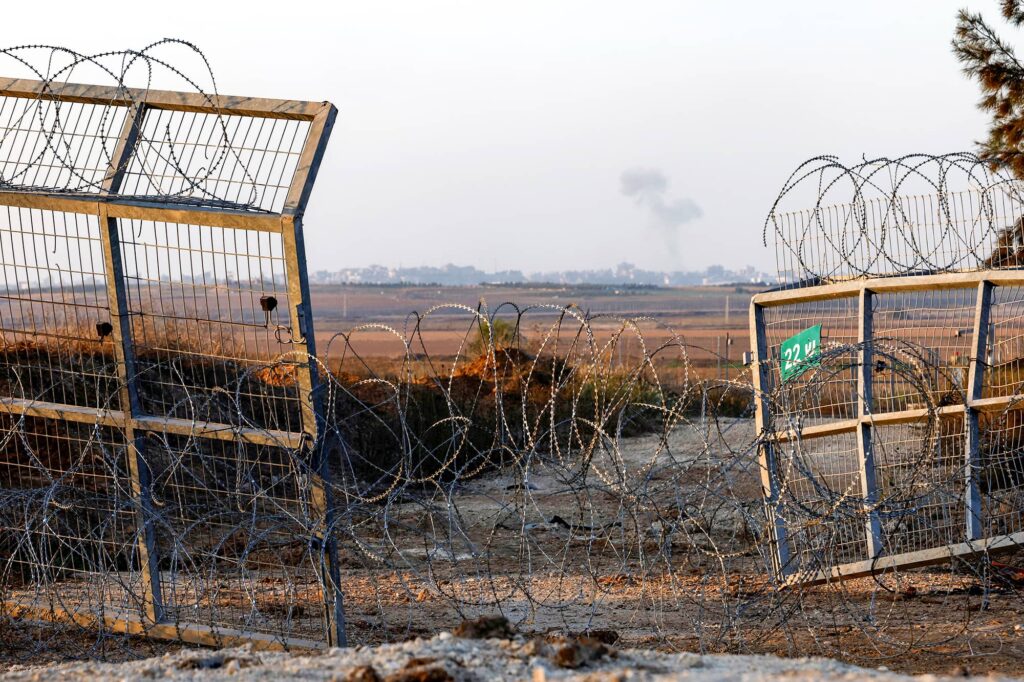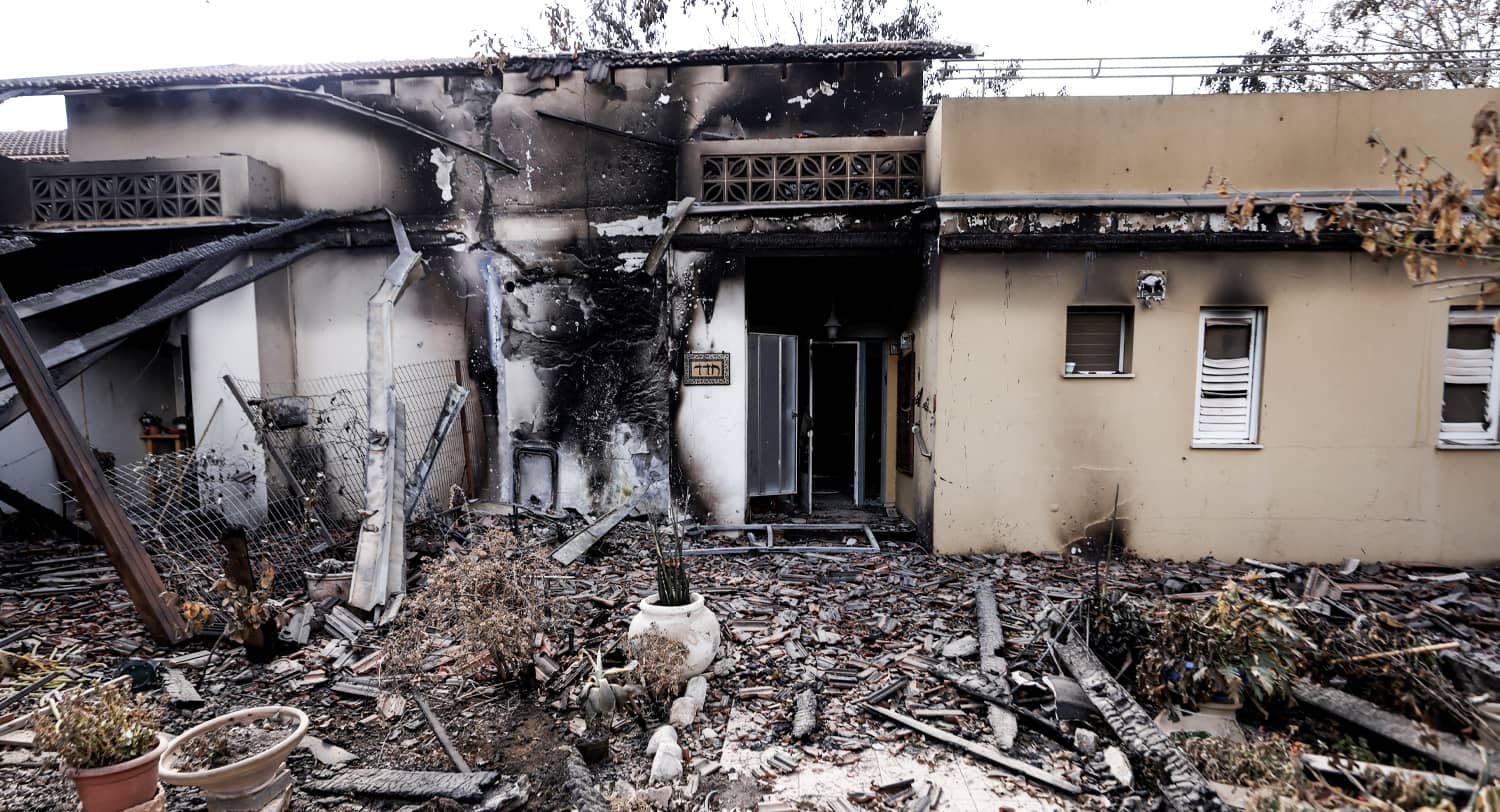Twice in the last fifty years, Israel sustained surprise attacks on a major scale. In the first instance, in October 1973, the IDF failed in fulfilling its mission of defending Israel’s frontiers, but partially compensated for this failure later in the war. Fifty years later, in October 2023, the IDF failed in an irreversible way in its ultimate mission, defending the lives of Israel’s citizens. Both catastrophes were primarily the outcome of insufficient land forces in the right place at the appropriate time.
One lesson learned from this war is the shameful neglect of spatial defense along the borders.
Following the 1967 war, Israeli political leadership and the IDF high command began using three slogans as a national security doctrine: “Deterrence” – the capacity to dissuade enemies from launching an attack; “Early Alert” – enabling a timely call up of Israel’s reserves; and “Decisive Outcome” – the swift breaking of enemies’ ability and will to fight, to be achieved by effective manoeuver in their territory. I warned in these pages back in March 2022 that given Israel’s new circumstances, these slogans run the risk of becoming obsolete unless supplemented by other, long-neglected capabilities.
More recently the defense establishment added a fourth slogan: “Technology” meaning the use of cyber, satellites, and precision munitions, and their presumed ability to replace human beings, save lives and win campaigns. As we have now learned, technologies cannot do it all by themselves. They can not cover for human mistakes the likes of which we saw in October 1973 and again fifty years later.
Underlying these slogans lay a growing reluctance of Israeli society to sustain casualties. Ariel Sharon and others commented on this unwillingness already in 1969. The Six Day War, Sharon said, was bloody – but the Israeli people accepted the toll because the achievements compensated for it. However, casualties for the sake of keeping these accomplishments, during the 1967-1970 War of Attrition and in later conflicts, were less acceptable to the public. This current war may be returning public attitudes to the pre-1967 circumstances.
Originally, the border settlements served as Israel’s first line of defense. They defended themselves and supplemented the then small regular army (three brigades) in providing cover for the mobilization of the reserve formations. The status of those living in the border settlements was identical to that of reserve soldiers. They were organized in companies and platoons in the border towns and villages and integrated into the IDF’s territorial hierarchy of areas and districts under territorial commands. They were trained and equipped according to their mission, including anti-tank and light support arms.
After 1967, the spatial defense concept and organization gradually degenerated and after 1973 fell into oblivion. The IDF dealt with subsequent terrorist attacks along its northern border (for example, at Ma’alot in 1974 and Misgav ‘Am in 1980) through its special forces.

A similar process took place around the Gaza Strip. As long as there were Jewish settlements inside the Strip, the bulk of terrorist actions targeted them and they were considered burdens rather than assets. But after the removal of settlements inside Gaza took place in 2005, the Gaza border settlements in the Western Negev once again became targets of attack and returned to their status of the 1950s. For the last 15 years they have lived under conditions of a war of attrition, exposed to various kinds of terrorist threats from balloons to missiles.
Waging a war of attrition in populated areas like the Gaza border or along the Lebanese border is totally different from a war against a regular army in the dunes along the Suez Canal. No one in the political and military top echelon focused on the border war of attrition before 7 October. The assessment of the conditions and threats along the Gaza Strip and the Lebanon border focused on the question of whether Hizbullah and Hamas were deterred or not. In both cases the long-standing conclusion was that the IDF had deterred the hostile organizations.
For many years, the role of border settlements has been perceived in terms of current security, not of a defensive war. The anticipated threat was at most a possible penetration of a terrorist or a small group of terrorists into a settlement. The overall strategy was one of buying peace and avoiding provocative actions. Nothing was done to strengthen the settlements’ capability of self-defense during the first phase of an attack until the arrival of the army. Rather the opposite happened. Spatial defense shrunk to small “preparedness squads,” their weapons were reduced in number and quality, and they were generally neglected by the army. Ultimately, they were transferred to the responsibility of the police.
One of the conspicuous lessons of the current war is the need for a basic reform of the defense of Israel’s frontiers and its place in the IDF’s order of priorities. It concerns not only rural agricultural settlements but also towns within a short distance of the border. With all due respect to the bravery of the policemen and women who fought the invaders on 7 October, they are not combatants and are not trained to fight in teams against large groups of terrorists. Defending the town from an external assault is a matter for the military, and requires dedicated formations. The spatial defense of the border settlements should be integrated into the IDF long-neglected system of defense, and be its first line in the case of another surprise attack.
The reform should begin at the level of general principles, in the framework of a revised national defense doctrine. The main source of manpower for implementing such a reform should be the inhabitants of the border areas. Local residents above a certain age and with proper training and experience should be posted to platoons or companies destined to defend their own settlements. They should be trained annually to keep up their fitness and equipped not only with small arms but with machine guns, light anti-tank weapons and light mortars.
The threat to the border settlements may not be one of the most severe that Israel faces, compared with the Iranian nuclear project or Hizbullah’s long-range missile arsenal. But it is certainly one of the most painful lessons Israel has endured. It should be heeded, if we want to stop the present path of deterioration and prepare efficiently for the next outburst of violence.



